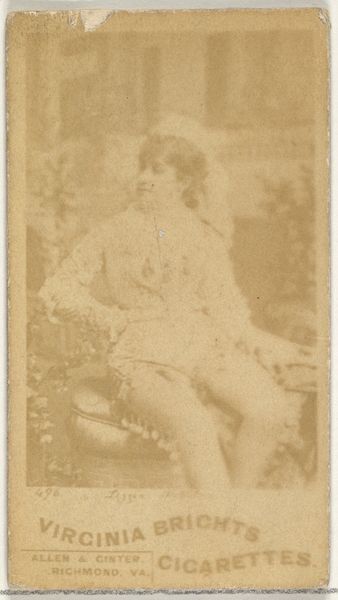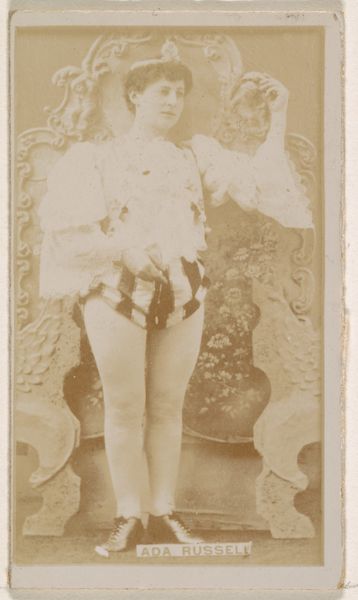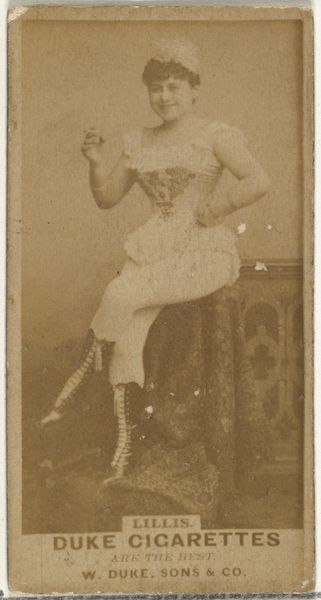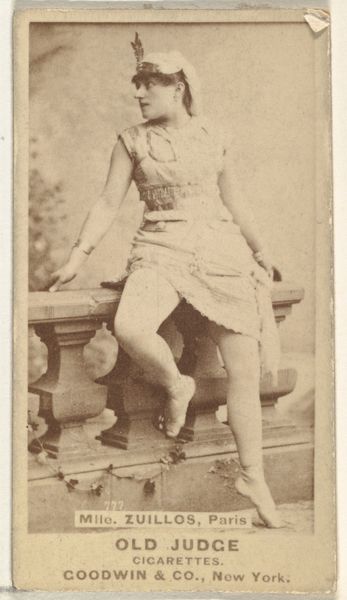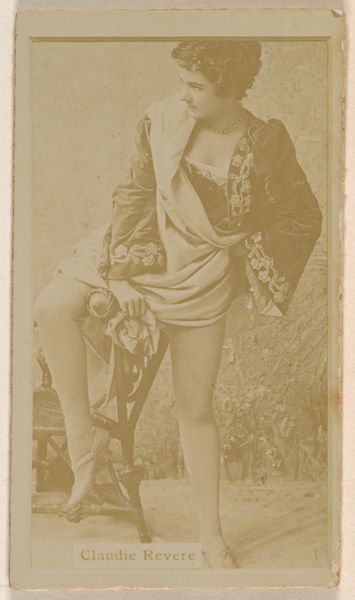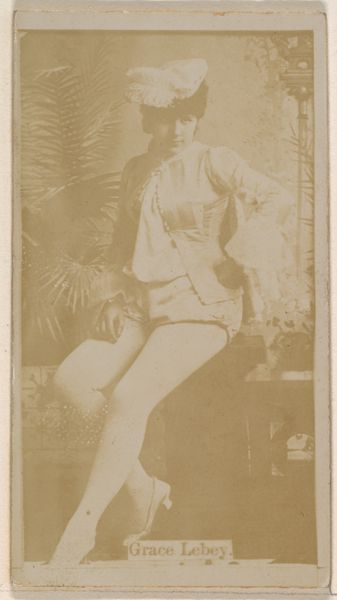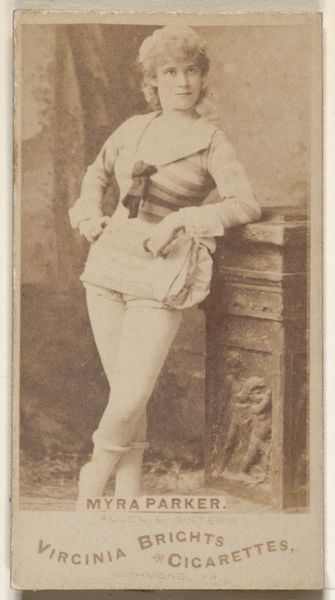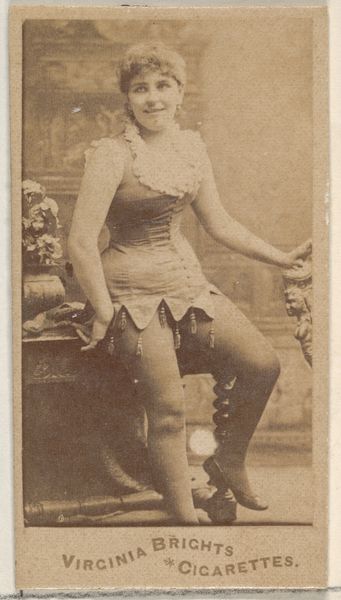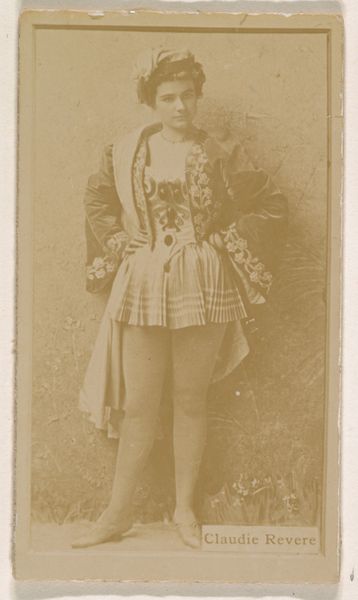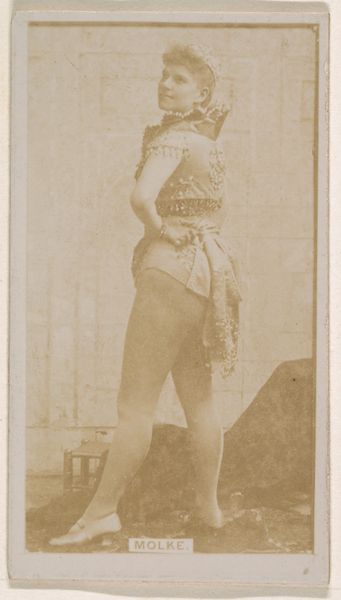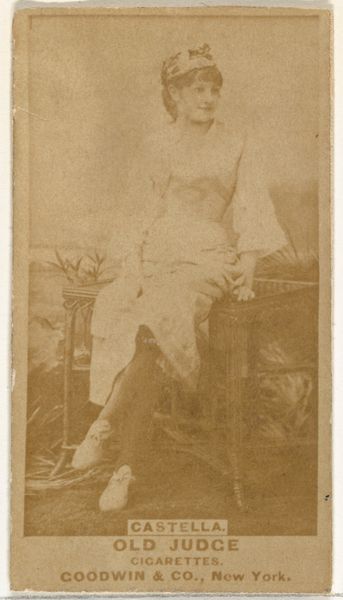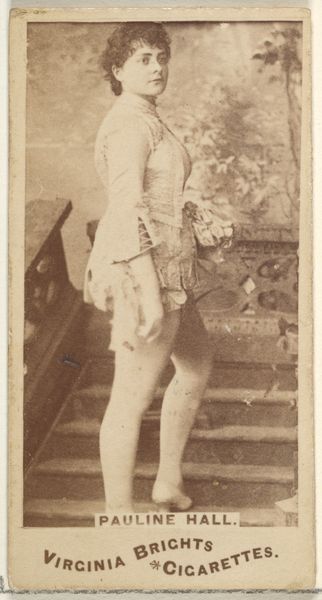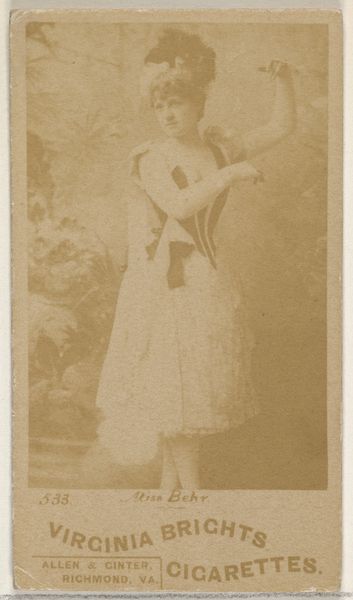
From the Actors and Actresses series (N45, Type 4) for Virginia Brights Cigarettes 1885 - 1891
0:00
0:00
Dimensions: Sheet: 2 3/4 x 1 3/8 in. (7 x 3.5 cm)
Copyright: Public Domain
Curator: It’s quite striking, isn’t it? What are your immediate impressions? Editor: Striking, and somewhat ghostly. The sepia tone lends an antique air. It's intimate but also feels impersonal. What exactly are we looking at here? Curator: This is a print from the Actors and Actresses series, dating from around 1885 to 1891. It’s part of a larger set made by Allen & Ginter for Virginia Brights Cigarettes. The Metropolitan Museum of Art holds this particular example. Editor: Ah, a cigarette card! The print quality speaks to mass production. Were these trading cards given away with each purchase? You can almost smell the paper and the tobacco. Curator: Exactly. Tobacco companies were quite prolific at commissioning images of celebrities of the time, in the hope that collectors would feel motivated to purchase their products, especially among working class citizens. The cards also served to portray ideal images of beauty, style, and even professional achievement. Editor: Yes, that’s very clear when you notice the actress and her elaborate clothing: the floral patterns and puffed sleeves represent access to beauty and aspiration through the vehicle of a widely available manufactured good. Curator: It's fascinating how these objects function on so many levels—advertisement, entertainment, and even aspiration. They tell us a lot about late 19th-century culture, too. Editor: It is the same as glossy fashion and lifestyle magazines that we find at supermarket checkout counters. We can see the very real influence on beauty standards from the democratization of image distribution as it occurred in print manufacturing. Curator: Yes, indeed. It gives a more comprehensive view of what portraiture and fame truly meant. It transcends pure artistry. Editor: Certainly, its status as a widely distributed consumer object shapes the subject depicted, in this case, to embody qualities and a social sphere far removed from those who might regularly handle such cards. Curator: Thinking about its accessibility through commercial enterprise makes this such a fascinating example of the role art can play in larger socio-political conversations. Editor: Precisely. By looking closely at how this card was produced and circulated, we understand so much about class, gender, and the burgeoning culture of consumerism at the time.
Comments
No comments
Be the first to comment and join the conversation on the ultimate creative platform.
